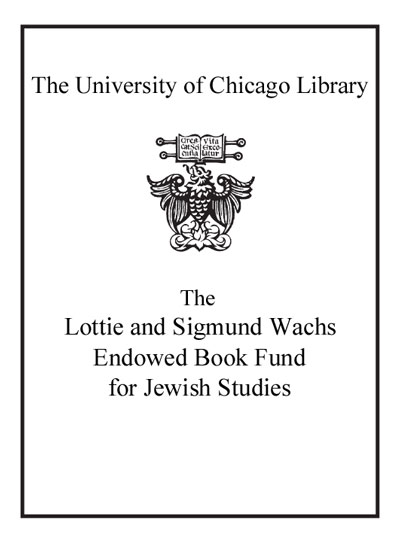Review by Booklist Review
Born in Rome in 1931, Loy is one of Italy's foremost novelists and journalists. Her memoir begins in 1936 and continues through 1943, the years of Benito Mussolini's fascist regime and its persecution of Italian Jews. Loy came from a family of prosperous Catholic intellectuals and, at the age of five, she became aware of the disparities between her life and the lives of her Jewish neighbors, including a family named Levi who eventually perished in the Holocaust. In 1933 the Catholic Church and the Third Reich agreed on a concordat, in which both parties affirmed the duty of German Catholics to obey their Nazi rulers, and she examines the less-than-virtuous conduct of the Vatican in the subversion of the Jews, including the implacable silence of Pope Pius XII. Loy chronicles the attacks on the Jews in Italy's press and the laws excluding Jews from civil and military administration of the state; from the administrations of provinces, cities, and public bodies; and from institutions and agencies. This memoir stands out as an intimate and honest record of the Italian Jews' deprivations and humiliations. --George Cohen
From Booklist, Copyright (c) American Library Association. Used with permission.
Review by Publisher's Weekly Review
Born in 1931, Loy (The Dust Roads of Monferrato) grew up in a prosperous Catholic family in Rome, happy with her friends, her school, her orderly life. Now one of Italy's leading novelists and journalists, she looks back on the years between 1936 and 1943 to write a memoir in which she alternates between poetic memories of her privileged childhood and an embittered account of fascism in Italy, an evil to which she was then oblivious. While she played with her dolls and vacationed at the seashore, terrible events gradually overwhelmed the countryÄa press campaign to get the Italians to think about "race," stringent laws restricting the activities of Jews, Italy's entrance into the war, and its acceptance of the Final Solution. Loy's own family shifted between German-occupied Rome and the countryside; her father, an engineer, closed his office rather than collaborate with the Germans; food and clothing were scarce; and order disappeared from her life. But Loy writes that, as a child, none of these events made an impression on her. She was never really unhappy: life went on blissfully. She remembers especially her Catholic school and the nuns who arranged for the children to have an audience with Pius XII, who seemed to her then to be "circumfused by a sacred halo." Yet as an adult, she condemns the pope, who, unlike his predecessor Pius XI, made no statements decrying the Holocaust and remained stubbornly silent even concerning the extermination of Polish priests and clerics. Loy explains that, as a Roman Catholic, she carries an "unbearable burden." Her scathing denunciation of the Vatican's support of Hitler and the willful passivity of Italy's intelligentsia forms a powerful act of atonement. (Aug.) (c) Copyright PWxyz, LLC. All rights reserved
(c) Copyright PWxyz, LLC. All rights reserved
Review by Library Journal Review
How did the Italians treat their Jewish population during the Fascist period? Loy, one of Italy's best-known writers, offers the perspective of a young schoolgirl from a well-to-do Catholic family between 1936 and 1943. The author contrasts her warm memories of schooldays, playmates, and family with the increasingly restrictive laws against Jews, the menacing Italian Blackshirts, and the failure of the Vatican to take a firm position against Jewish persecution. The true value of this work lies not in the charming memoir but in the brief chronology of the action and non-reactions of the Italian people and the Catholic Church. Loy also details pertinent events outside Italy for comparison. Though this is an enlightening work, it would have benefited greatly from an index and bibliography. For more detailed looks at this controversial topic, see John Cornwell's Hitler's Pope: The Secret History of Pius XII (LJ 5/15/99), Pierre Blet's Pius XII and the Second World War: According to the Archives of the Vatican (Paulist, 1999), or Margherita Marchione's Pope Pius XII: Architect for Peace (Paulist, 2000). Recommended for larger public libraries.DMaria C. Bagshaw, Lake Erie Coll., Painesville, OH (c) Copyright 2010. Library Journals LLC, a wholly owned subsidiary of Media Source, Inc. No redistribution permitted.
(c) Copyright Library Journals LLC, a wholly owned subsidiary of Media Source, Inc. No redistribution permitted.
Review by Kirkus Book Review
Novelist Rosetta Loy grew up in a sophisticated Catholic family in Italy in the 1930s. As a child she was told that Jews did not baptize, but instead cut off part of a boy's flesh with scissors. Many of her neighbors were Jewish: there was Signora Della Seta (a kindly gray-haired lady who often gave Rosetta presents) and the Levis (the noisy piano- and soccer-playing family upstairs). Loy describes the other things she learned about Jews growing up: they had to wear yellow stars on their arms, they could not go to certain schools or hold certain jobs, and eventually they were shipped off to camps and gassed to death. She writes of her own family's blindness to their neighbors' fate, and of the heroism of other Catholic Italians--like the couple who ran a whorehouse and kept a gaggle of Jewish children alive in the basement through the war, sharing their pitiful rations with them and protecting them from the authorities. Though there is little in Loy's memoir that can't be found in a dozen other Holocaust autobiographies, the author's elegant and spare prose distinguishes her from the others. Copyright ©Kirkus Reviews, used with permission.
Copyright (c) Kirkus Reviews, used with permission.
Review by Booklist Review
Review by Publisher's Weekly Review
Review by Library Journal Review
Review by Kirkus Book Review

